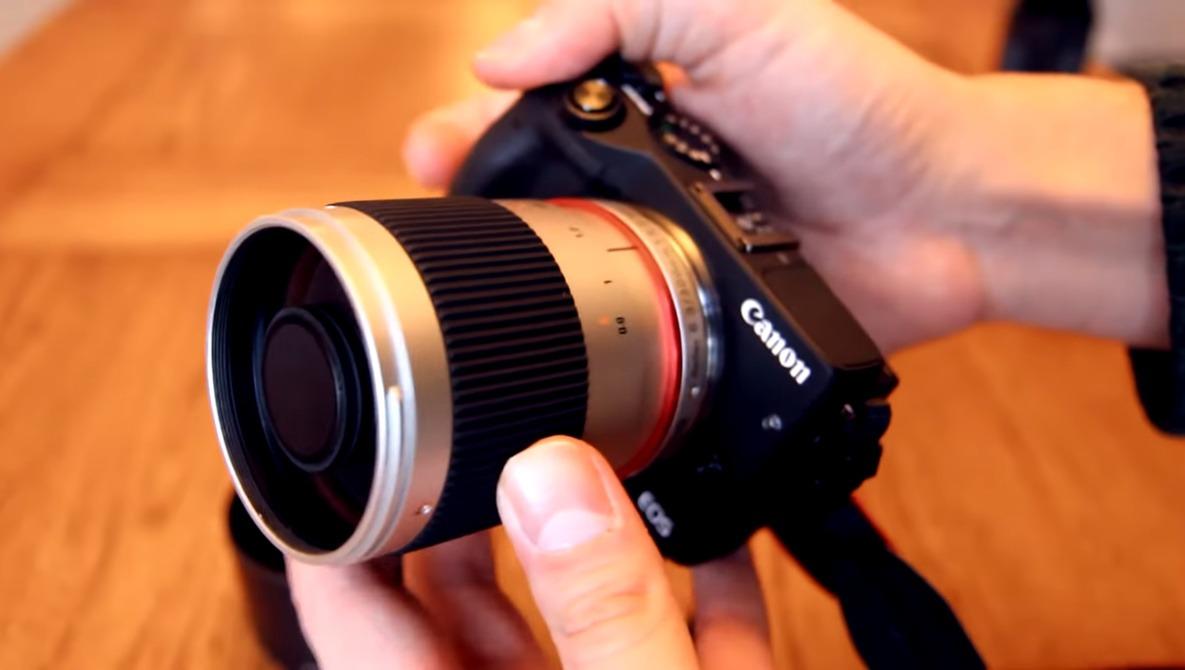Samyang 300mm Mirror Lens Review

Samyang 300mm Mirror Lens Review
The Samyang 300mm Mirror Lens stands out in the photography world as a lightweight, compact, and affordable super-telephoto option. Unlike conventional telephoto lenses, it relies on catadioptric mirror technology, which allows photographers to achieve a long focal length without the excessive bulk and weight. In this detailed review, we will explore its design, optical performance, usability, and the type of photographers who would benefit most from this lens.
Design and Build Quality
At first glance, the Samyang 300mm Mirror Lens looks quite different from standard telephoto primes. Thanks to the use of mirrors, its barrel remains relatively short compared to a traditional 300mm lens. This makes it highly portable, a feature many travel and wildlife photographers appreciate. The construction is solid, with a combination of metal and high-grade plastic ensuring durability without adding unnecessary weight. Weighing just around 300 grams, it can be easily carried in a camera bag without straining the shoulders. The lens is completely manual, with no autofocus or image stabilization built in. This design choice keeps it simple and affordable but requires more patience and skill from the photographer.
Optical Characteristics
The mirror lens design comes with both strengths and compromises. On the positive side, the Samyang 300mm delivers a long reach, allowing you to capture distant subjects such as wildlife, landscapes, and even celestial objects. Its unique rendering creates the well-known “donut-shaped bokeh,” which some photographers find artistic and others see as distracting. Image sharpness is decent in good lighting, especially at the center of the frame. However, edge sharpness may drop off slightly, and contrast is lower compared to conventional telephoto lenses. Using post-processing can help recover contrast and color depth. Because the aperture is fixed at f/6.3 or f/7.1 (depending on the version), low-light shooting can be challenging. This means it works best in bright daylight conditions or when mounted on a tripod for stability.
Handling and Usability
One of the main attractions of the Samyang 300mm Mirror Lens is how easy it is to handle compared to its bulkier telephoto counterparts. Since it has no autofocus motor or electronics, it can be mounted on a wide variety of cameras using simple adapters. Manual focusing requires precision, especially when tracking moving subjects. Many users prefer to pair it with focus peaking features available in modern mirrorless cameras to improve accuracy. The fixed aperture may feel limiting, but it simplifies exposure control. Photographers who are used to adjusting aperture settings for creative depth-of-field control will need to adapt to this new shooting style.
Performance in Different Photography Genres
Wildlife Photography
For birders and wildlife enthusiasts, the Samyang 300mm offers reach without the heavy price tag of professional telephotos. The downside, however, is that moving subjects are harder to capture due to the manual focus system. Patience, practice, and good lighting are key to achieving satisfying results.
Astrophotography
Thanks to its long focal length, many photographers use this lens for moon and planetary shots. Its lightweight design makes it easy to set up on tracking mounts, and despite the fixed aperture, it can deliver surprisingly detailed lunar images.
Travel and Landscape
When hiking or traveling, carrying a traditional 300mm lens can be impractical. The mirror lens solves this problem with its compact design. While it may not deliver the same contrast and sharpness as professional glass, it allows travelers to capture distant scenes without adding bulk to their gear.
Comparisons with Traditional Telephoto Lenses
Compared to a standard 300mm telephoto prime, the Samyang 300mm is dramatically lighter and cheaper. However, image quality and versatility are where the compromises appear. Conventional telephoto lenses typically offer wider apertures, faster autofocus, and better sharpness across the frame. Still, the mirror lens shines for niche photographers who value portability above all. For someone who needs professional-level sharpness and reliability, a high-end telephoto is the better choice. But for beginners or hobbyists experimenting with long focal lengths, the Samyang 300mm Mirror Lens is an accessible entry point.
Price and Value
One of the strongest selling points of this lens is affordability. While premium telephoto lenses can cost thousands, the Samyang 300mm offers reach at a fraction of the price. This makes it a practical choice for learners or budget-conscious photographers who want to explore long-distance photography without committing to an expensive investment. When considering lens investments, it’s helpful to compare how budget-friendly options like this fit alongside higher-end choices such as the sony 35mm 1.4 price in pakistan, which caters to photographers seeking premium optics. This balance between affordability and performance highlights where the 300mm mirror lens makes sense.
Who Should Buy the Samyang 300mm Mirror Lens?
This lens is not meant for everyone, but it fills a unique gap in the lens market. It is ideal for:
-
Photographers who want a lightweight, inexpensive telephoto option
-
Hobbyists interested in experimenting with mirror lens rendering
-
Travelers seeking a compact long-focus solution
-
Astro enthusiasts looking for a budget-friendly tool for moon photography
However, those requiring fast autofocus, wide apertures, or professional-grade sharpness may find it limiting. In such cases, investing in higher-end Camera lenses may be more suitable.
Final Verdict
The Samyang 300mm Mirror Lens is a fascinating piece of gear that blends affordability, portability, and creative optical design. While it does not match the performance of professional telephoto lenses, it opens the door to long-distance photography for those who cannot afford or do not wish to carry heavy equipment. Its unique donut-shaped bokeh, compact size, and accessibility make it a lens worth considering for hobbyists and experimental photographers. If you understand its limitations and strengths, it can be a surprisingly rewarding addition to your kit.


